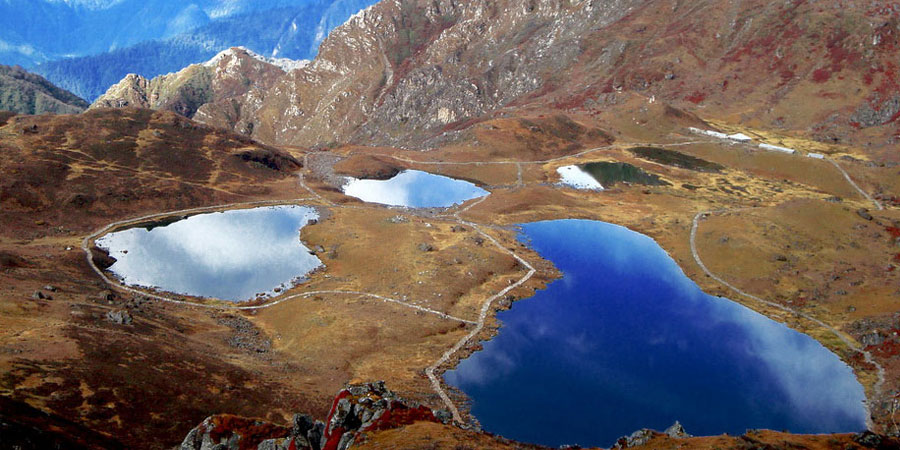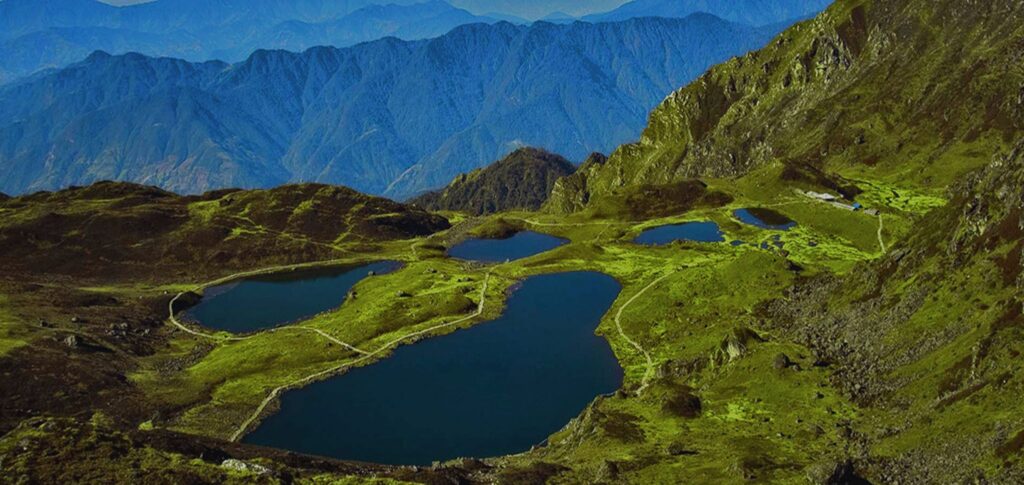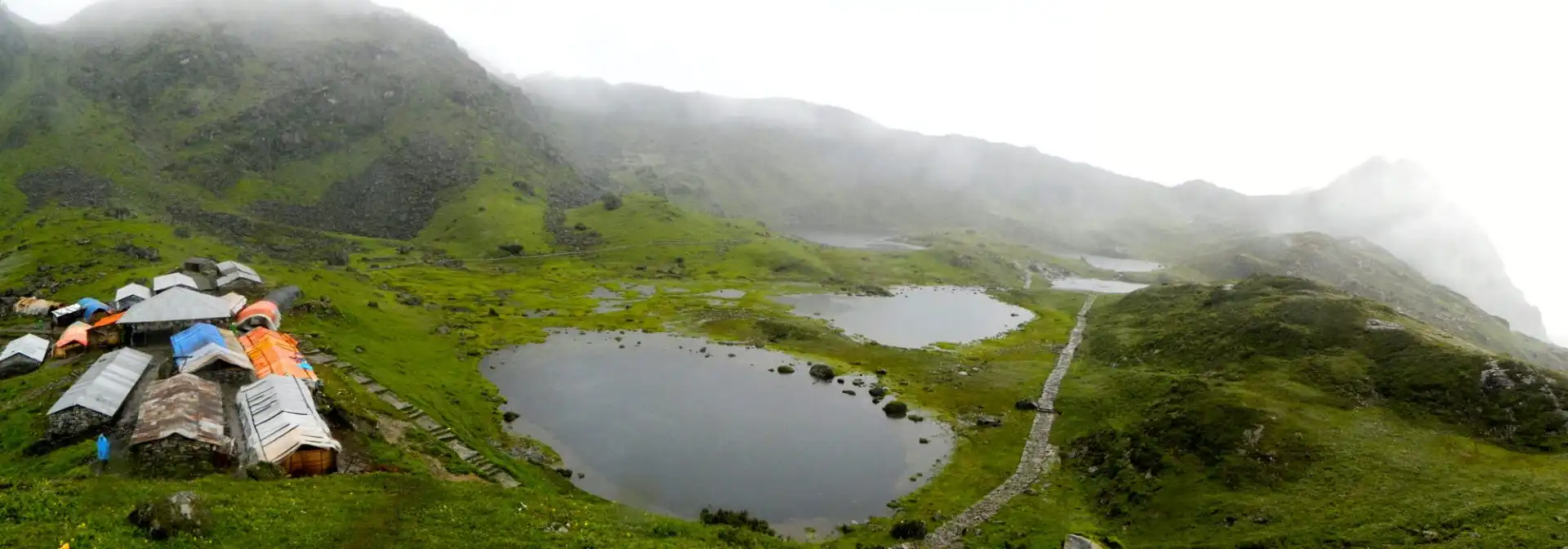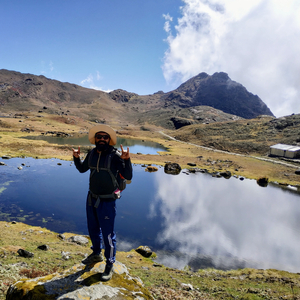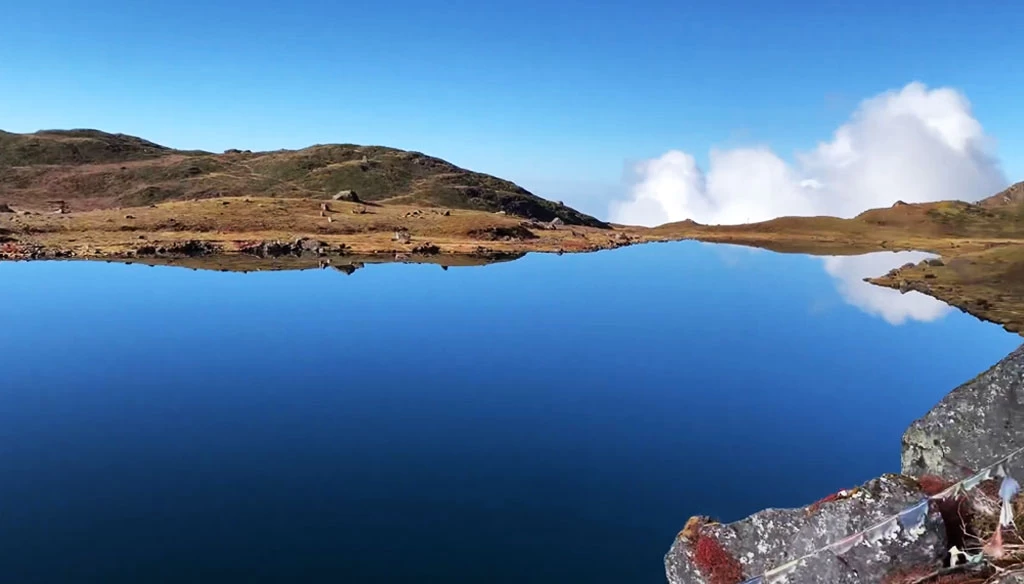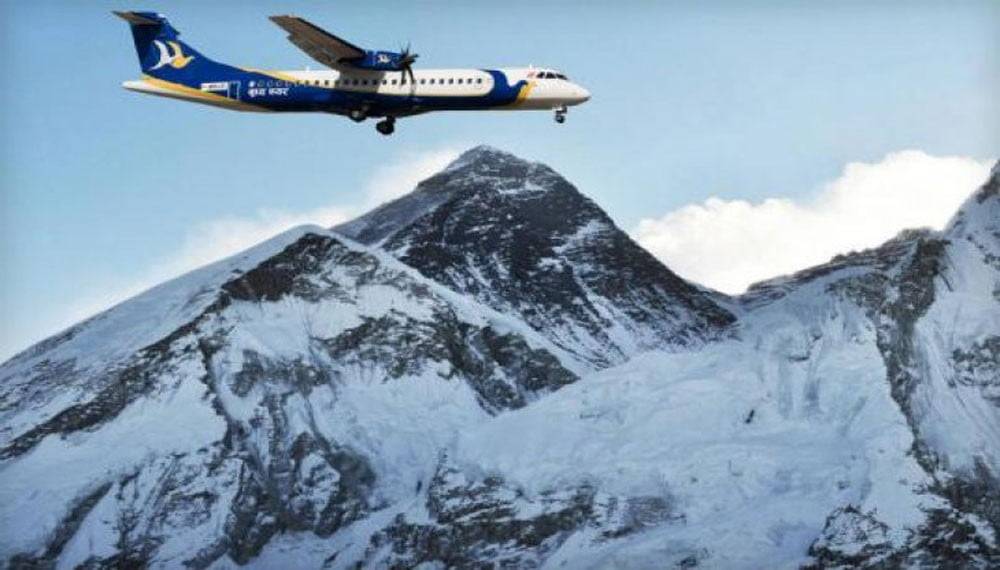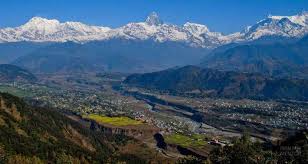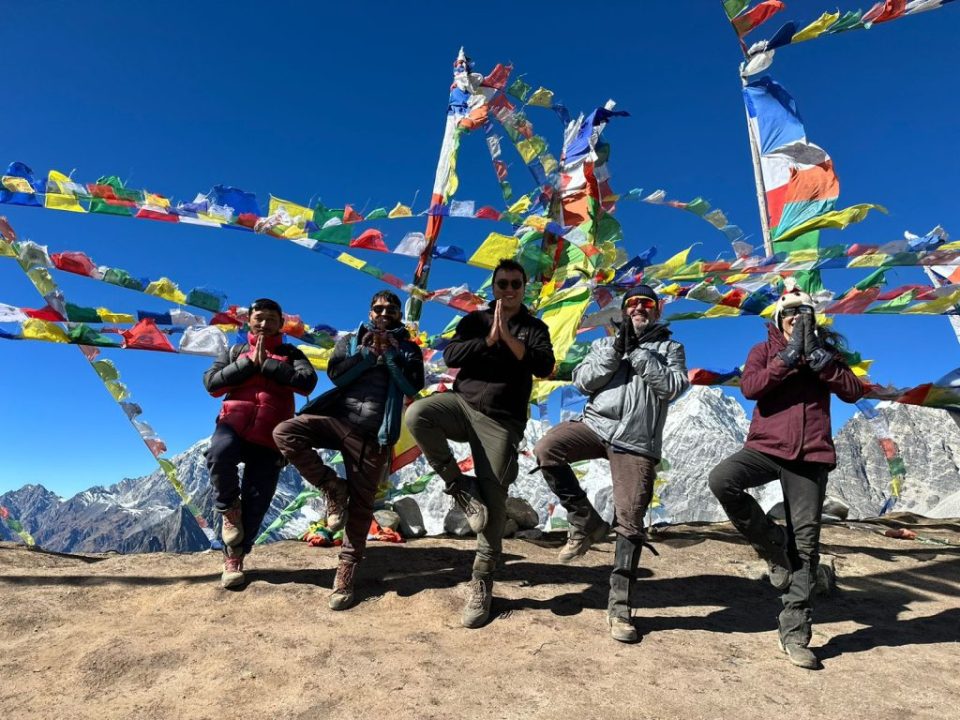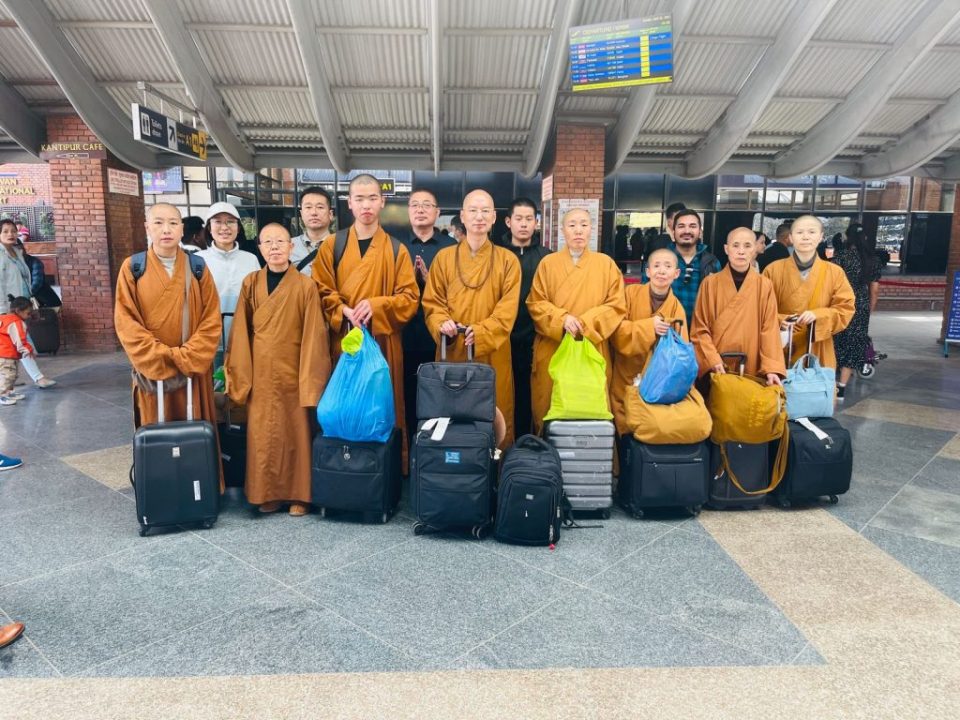Panch Pokhari Trek
Trip Introduction
The Panch Pokhari Trekking Route is a recently discovered Trekking Route in the unspoiled parts of Himalayas. It lies in the district of Sindhulpalchok, Nuwakot. It is located northeast of Kathmandu. It is situated at an altitude of approximately 4,100m above sea level. It is one of the most remote treks. Panch Pokhari is significant both culturally and religiously. On the occasion of Jani Purnima, which falls in August, Hindus visit Panch Pokhari. At the foot of Jugal Himal, there are five sacred ponds. The lakes are thought to be the source of the Indravati River.
The geographical terrains, Flora and Fauna, and mountain views are the highlights of this trek. The trek takes you through Sherpa and Tamang villages. As you find peace in the environment, you can also practice yoga and meditation. This is a diverse trek because we will walk through beautiful mountains, wetlands, and remote settlements. The whole trail to Panch Pokhari had a clam beauty above the clouds. You can see Dorje Lakpa, Phurbu Chhyachu, Madiya, Jugal Himal, Rolwaling, and the Langtang Range.
The trek begins with a drive from Kathmandu to Simpal. The journey will take between 5 and 6 hours. It marks the beginning of the trek. Before reaching Panch Pokhari, we will pass through several villages including Kami Kharka, Pauwa Bas, and Hile Bhanjyang. This trek will expose you to Himalayan culture and lifestyle. The trail travels through beautiful scenery, waterfalls, alpine forests, temples, and more. Melamchi is the trek’s endpoint the highest.
Itinerary
Departure from : Kathmandu, Nepal
Arrival On : Kathmandu, Nepal
Day 1
Arrival at TIA Kathmandu
| Days | Activities | Duration |
| 1. | Arrival at TIA Kathmandu (1,400m/4,592ft) | |
| 2. | Drive From Kathmandu to Simpal (1,813m/5,948ft) | 5-6hrs |
| 3. | Trek from Simpal to Kami Kharka (2,810m/9,220ft) | 6-7hrs |
| 4. | Trek from Kami Kharka to Pauwa Bas (3000m/9,845ft) | 6-7hrs |
| 5. | Trek from Pauwa Bas to Hile Bhanjyang (3,400m11,154ft) | 6-7hrs |
| 6. | Trek from Hile Bhanjyang to Panch Pokhari (4,100m/13,452ft) | 6-7hrs |
| 7. | Trek from Panch Pokhari to Tupi Danda (2,320m/7,612ft) | 7-8hrs |
| 8. | Trek from Tupi Danda to Dhap (1,200m/3,940ft) | 6-7hrs |
| 9. | Trek from Dhap to Melamchi (800m/2,625ft) and Drive Back to Kathmandu | 6-7hrs |
| 10. | Departure. |
Upon arrival at Tribhuvan International Airport (TIA). Our agent will greet you and accompany you to the hotel. Drive to the hotel and check-in. Our guide will come to see you in the evening and give you a brief overview of the journey.
Overnight stay in the hotel.
Day 2
Drive from Kathmandu to Simpal
This morning, after you’ve finished your breakfast at the hotel, get ready, pack your bags and we will depart for Simpal, a 5 to 6-hour drive away. We’ll be driving through traditional terraced fields and along the mountainside. We’ll be passing through Chautara. The drive will be thrilling and exciting. We will travel through several rivers, streams, small settlements, and scenic areas. We’ll stop for lunch on the way.
Dinner and Overnight at the Teahouse.
Day 3
Trek from Simpal to Kami Kharka
Today is the first day of our trek. Having breakfast, we will leave for Kami Kharka. We’ll be walking for 6 to 7 hours. We’ll gradually approach Sano Okhareni. We’ll be passing through a deep forest. We’ll stop for lunch on the way. Having lunch and an hour of rest, we will continue your walk towards Kami Kharka. We will pass through various settlements before arriving in Kami Kharka.
Dinner and Overnight at the Teahouse.
Day 4
Trek from Kami Kharka to Pauwa Bas
Today, we’ll leave for Pauwa Bas after breakfast. We’ll be walking for 6 to 7 hours. We will begin the hike on a flat trail before entering the forested route, which is lined with Rhododendron, oaks, and juniper trees. We’ll stop for lunch on the way. We’ll walk along a quiet forested track till we reach Pauwa Bas.
Dinner and Overnight at the Teahouse.
Day 5
Trek from Pauwa Bas to Hile Bhanjyang
Having breakfast, today we’ll leave for Hile Bhanjyang. We’ll be walking for 6 to 7 hours. We’ll climb up the steep path for three hours straight. On the trail, we will marvel at the breathtaking mountain scenery. We’ll stop for lunch on the way. Furthermore, for about one and a half hours, we will descend in a steep path. We’ll then take a path through the woods to reach Hile Bhanjyang.
Dinner and Overnight at the Teahouse
Day 6
Trek from Hile Bhanjyang to Panch Pokhari
Today is the day we will reach our main destination (Panch Pokhari). We’ll leave for Panch Pokhari after breakfast. We’ll be walking for 6 to 7 hours. We will begin with a steep climb up and then descend the forested path. We’ll take in the scenery as we walk along the trail. We’ll stop for lunch on the way. Then climbing up some rocky hills we will reach Panch Pokhari. We will stay the night on the teahouse just beside the Panch Pokahri lakes.
Get some rest and then we will hike to the viewpoint for the full view of all 5 lakes, which take 30-45 min from our stay. Be immersed in its beauty, and enjoy the surroundings. At certain times of the day, the 5 lakes will be hidden under the fog and you will not able to see all the lakes. However, be patience as the fog will also be cleared just in the blink of an eye. Once you capture the magnificent view of all 5 lakes in one frame, you will feel as if once is not enough. If we have enough time, we will again hike for 1hrs and 30 min and reach the Panch Pokhari viewpoint (4,300m) where you will be above the cloud and can see the whole 5 lakes along with Langtang and Jugal Himal range.
Dinner and Overnight at the Teahouse.
Day 7
Trek from Panch Pokhari to Tupi Danda
Today, we will begin our day early to watch the sunrise. Enjoy the sunrise, rising over the mountains and its reflection on the lakes (Panch Pokhari). After enjoying the sunrise, we will eat breakfast and depart for Tupi Danda. We’ll be walking for 7 to 8 hours. We’ll take the steep trail down and continue walking through the woods. We’ll stop for lunch on the way. We will take in the panoramic view of the mountains. Dinner and Overnight at the Teahouse.
Day 8
Trek from Tupi Danda to Dhap
Having breakfast, we’ll leave for Dhap. We’ll be walking for 6 to 7 hours. We will descend steeply for some time after leaving the Tupi Danda. We’ll stop for lunch on the way. We’ll continue on the flat path along the terraced field until we reach Dhap, the incredible Tamang community. Dinner and Overnight at the Teahouse.
Day 9
Trek from Dhap to Melamchi and Drive Back to Kathmandu
We’ll leave for Melamchi after breakfast. We’ll be walking for 5 to 6 hours. We will descend steeply for one hour, after which the trail will be flat until we reach Melamchi. We’ll stop for lunch on the way. To get to Melamchi, we’ll have to cross several villages and streams. The jeep will be waiting for us in Melamchi, and we will then drive back to Kathmandu on a bumpy road. You will be driven to the hotel, where our representative will assist you with the check-in process. Dinner and Overnight at the Hotel.
Day 10
Departure
The 10-day journey has come to a conclusion. Today is your last day in Kathmandu. Our representative will have a short discussion on the trip and take your feedback after a hearty breakfast. Following this session, he will drive you to the airport in our private transportation 3 hours before your trip.
Route Map
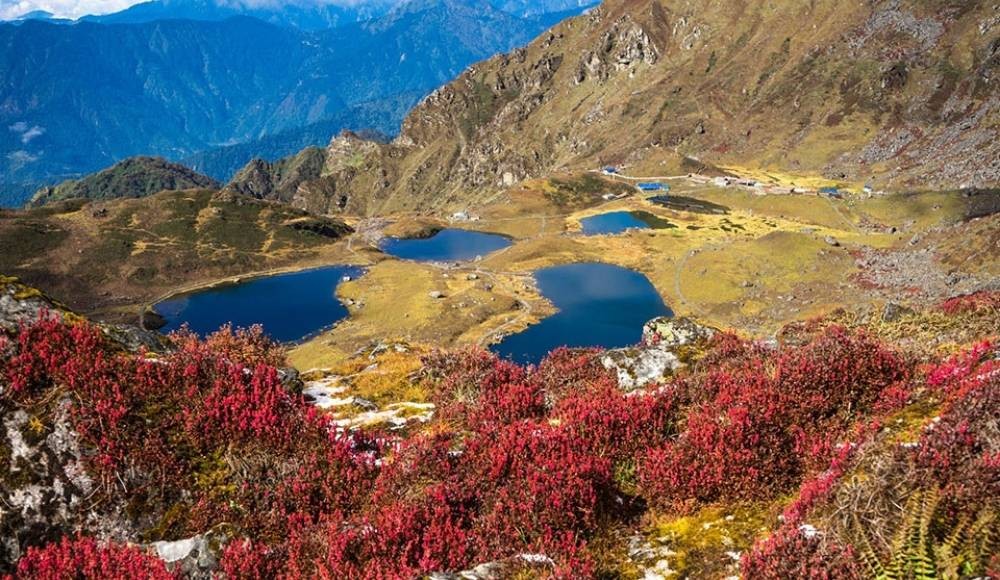
Altitude Map
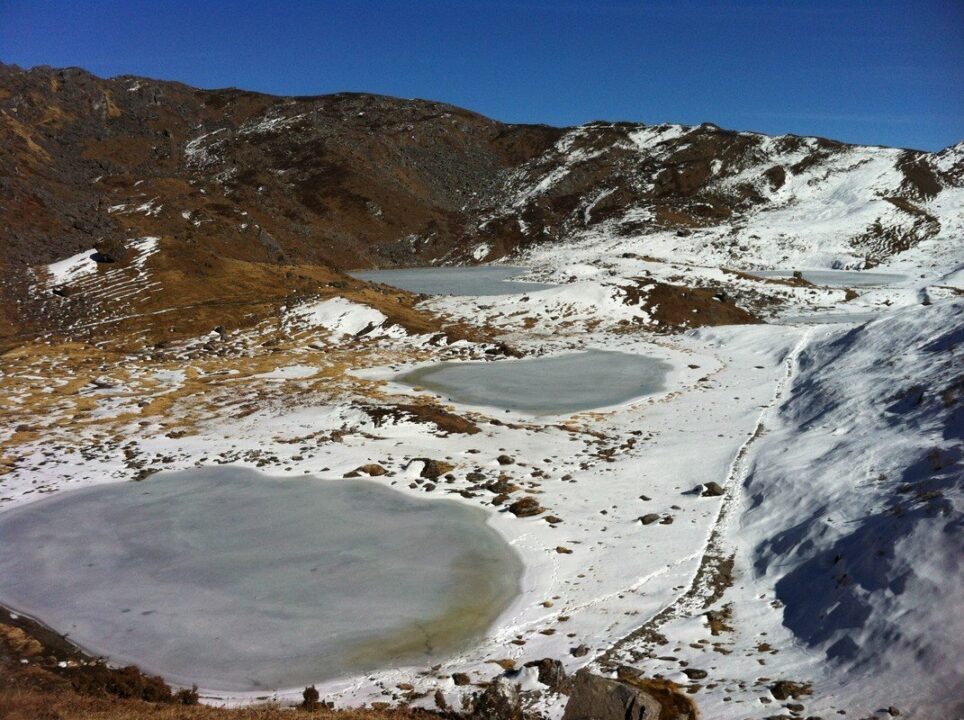
What's Included
- Arrival & Departure: Airport – Hotel transfer – Airport (Pick Up and Drop).
- Hotel Accommodation in Kathmandu: 2nights at Star categories hotel on twin sharing and BB basis
- Welcome Dinner and farewell dinner at Nepali culture restaurant in Kathmandu with Office’s Staff.
- Food & Lodging: 3 meals a day (Breakfast, Lunch, Dinner) along with accessible accommodation sharing at Hotel/Lodge/teahouse during the trek.
- Permit: All necessary paper works: Langtang National Park permit & TIMS card.
- All government and local taxes if necessary.
- Trekking Map: Langtang Region trekking map.
- Member transportation: – Road Transportation: From Kathmandu – Simpal and Melamchi Bazaar to Kathmandu.
- Drinking water: 2 liters of boiled water to carry on thermos per day per member.
- Guide: Government licensed Guide (English speaking) during the trek
- Porter: Porters (2 trekkers: 1 porter) up to 15kg during the trek.
- Insurance: Insurance for all involved Nepalese staff during the trek.
- Comprehensive Medical kit.
What's Not Included
- Air Fare: International flight airfare (from and to Kathmandu).
- Nepal entry visa fee.
- Extra night in Kathmandu: Extra nights’ expenses in Kathmandu. In case of early arrival or late departure, early return from Trekking (due to any reason) than the scheduled itinerary.
- Personal Insurance: Travel and high-altitude insurance. *Mandatory
- Personal Expenses: Telephone calls, Internet, Toiletries, battery recharge, hot shower, laundry, soft drinks, beer, and any alcoholic beverages.
- Personal Equipment: Clothing, Packing Items or Bags, Personal Medical Kit, Personal Trekking equipment.
- Rescue Evacuation: Medical and emergency rescue evacuation costs if required. (Rescue, Repatriation, Helicopter, Medication, Medical Tests and Hospitalization costs).
Equipment List
What to bring ?
General
Tailor Your Holiday
Everyone has their own preferences in terms of destination, journey time, and budget. As a result, sticking to our plan isn't necessary. We will create a personalized itinerary for you that includes accommodations, transportation, meals, and tour guides. We guarantee you the best Tailor-made Package because this is your trip. You have the option to personalize it, as your liking. Let us Plan together to make your Vacation worth it.
Fixed Departure
Why Travel With Us?
Secure Online Payment, No Credit Card Fee
24/7 International Support
Travel with Locals. Support Locals
Support Local Communities & Donate to Charity
Lifetime Deposit
All Inclusive Price
Private & Tailor-Made Trips
Secure Online Payment, No Credit Card Fee
Trip Facts
| Country | Nepal |
| Duration | 10 Days |
| Maximum Altitude | 4,100m/13,452ft |
| Region | Helambu |
| Meals | Breakfast, Lunch, Dinner |
| Accommodation | Hotel, Lodge, Teahouses |
| Grade | Moderate |
| Best season | Mar, Apr, May, Sep, Oct, Nov |
Trip Highlights
- Enjoy the paranoiac view of Dorje Lakpa, Phurbu Chhyachu, Madiya, Jugal Himal, Rolwaling, and the Langtang Range.
- Explore the Sherpa and Tamang villages and learn about their culture.
- Amazing Views of Five sacred ponds Panch Pokhari.
- Adventurous walk in the Less Crowded path and remote destination.
- Pass through beautiful forests, alpine meadows, and yak pastures.
Is this trek appropriate for you?
- The Panch Pokhari Trek is the Moderate Trek. You can easily complete this trek if you are physically and mentally prepared and willing to do so.
- You will be Trekking for 7 Days. The Path can be completed in as little as 6 hours as much as 8 hours.
- The walk is not tricky, there is no Climbing or Scrambling but the path is rocky and hilly.
- Each day you will cover 200 to 400 meters in height while trekking. Highest point in the trek dailyou will reach on the trek is 4,100m.
The weather and Remoteness of this trek, as well as dealing with the high altitude, require a slow pace and the need to stay hydrated
The ideal season to travel
Spring (March, April, May)
Spring is the finest time to trek to Panch Pokhari. You will enjoy the long, warm days of this season. Daytime temperatures range from 10 to 20 degrees Celsius (50 to 68 degrees Fahrenheit). The trail will be vibrant this season because it is Rhododendron’s season. Along the journey, you’ll see some wildflowers.
Summer (June, July, August)
They are the hottest month of the summer, as well as the beginning of the monsoon season. On sunny days, the temperature in the lower regions will remain constant at 30 ° C (86 ° F). However, as you ascend, the temperature begins to fall by around 12 ° C (52.36 ° F) in July. Because of the rain, the route is slippery with leeches, beetles, and earthworms. There is also the possibility of road closures due to landslides. However, you can also enjoy the greenery throughout the trail. Mountain views can also provide a clear view.
Autumn (September, October, November)
Autumn is the best season for the Panch Pokhari trek because the skies are clear and blue. You may feel cold in the mornings and at night, but the temperature ranges from 10°C to 15°C (50°F to 59°F) during the day. You will have the best trekking memories if the temperatures are bearable and the weather is stable. The rainfall is low during this season, and the scenery is stunning.
Winter (December, January, February)
December to February is the winter season. The region is experiencing snow and cold, with daytime temperatures ranging from 6°C to 9°C (42.8°F to 48.2°F). The nights, on the other hand, are much colder, with temperatures dipping below zero degrees. If you go trekking during this season, you will discover that it is less crowded, but you will have to struggle with the snowfall and finding accommodation. While trekking, you must proceed with caution.
Drive to Simpal
- The Distance between Kathmandu and Simpal is 95 km.
- Traveling to Simpal by jeep will take around 5-6 hours.
Altitude sickness
Panch Pokhari is the short and sought-after trekking destination located at an altitude of 4,100m, and altitude sickness is the sneaky monster that sometimes attacks even the fittest trekkers beyond the altitude of 2,500m (8,000ft).
As a result, preventing altitude sickness during the trek and remaining healthy throughout the trek should be your top priorities. With lower air pressure and lower inspiratory oxygen pressure, you’ll be hiking into the high-altitude zone. Acclimatization is the process of progressively becoming familiar with the new climate or changing environmental conditions. Almost everyone going quickly from lower to higher elevations requires altitude adaptation.
At elevations beyond 2,500 meters, AMS symptoms can be detected like:
- Increased breathing.
- Increased urination
- Restless sleep.
- Periodic breathing at night because of altitude.
- Shortness of breath.
- Extreme fatigue.
- Respiratory failure.
- Cerebral edema.
To guarantee that the condition does not worse, certain precautions should be taken. However, if the symptoms increase, it is necessary to return to a lower height and seek medical assistance.
Some of the precautions you can take to avoid altitude sickness is-
- Walk slowly and gradually, as our bodies require time to adjust to the oxygen level. At least one day of acclimatization rest is required for high altitude trekking, and you should go as high as possible before returning to a lower height for the night
- To gain strength stamina for your Panch Pokhari journey, you should undertake various strength training exercises such as running, cycling, jogging, push-ups, and going to the gym.
- The greatest remedy is to always stay hydrated. On your walk, instead of drinking cooled water, drink warm water and avoid alcohol, cigarette, and tobacco. You should also eat a balanced diet for strength.
- Before traveling to an altitude greater than 3000 m, you must properly acclimate. If your body displays any signs of altitude sickness, you must either stop immediately where you are or consider descending to a lower altitude.
- Bring a Diamox subscription with you on the trek because it is the most effective altitude sickness medication. However, you should consult with your doctor to see whether it is beneficial.
Things to know before traveling to Panch Pokhari.
Drinking-Water
Especially for trekkers, it is very necessary to hydrate your body at a higher altitude than in lower elevations to avoid dehydration and altitude sickness. Lack of fluid can be the main hindrance during the trek. You should hydrate your body with at least 3-4 liters of water on a daily basis (Tea, soup, or normal drinking water).
Panch Pokari is in the remotest area, so finding safe drinking water on the trail to Panch Pokhari is difficult. Water streams/ resources are also limited to almost No. As well as, they are tainted with bacteria and thus unsafe to drink. So, unless there is an emergency, it is highly urged not to drink stream water without boiling. You are not used to the local water, so drinking it may result in Diarrhoea.
Besides the stream waters, the only places to get drinking water are the teahouses and lodges. Settlements in the trail to Panch Pokhari are within a distant distance, but they are also only a few teahouses. So, whenever you find any teahouses on the trail grab the opportunity to fill your water bottle and treat it with purifying tablet or Steripen before drinking. A filtration system, such as LifeStraw, can also be used. Plastic water bottles are also available in the teahouses, but they are quite expensive and due to the no proper waste disposal on the way to Panch Pokhari, it will pollute the local ecosystem. Therefore, we recommend you use a Reusable water bottle or water pouch favorable for both hot and cold water.
Every day, you must carry enough water for the day before beginning the trek because someday you won’t find any water resources on the trail. Here are some ways that you can use to make the water drinkable.
- Boiled water
Boiling water is the best way to purify the water. As we are climbing to a higher altitude you need to boil the water for about 3-4minute and season it with a pinch of salt before drinking. You can get free cold water in the teahouse but for boiled water, it cost around 1-1.5$ per liter and 2$- 3$ for a large pot.
- Purification tablets or electrolyte powder.
Purification tablets like chlorine or iodine tablets are commonly used tablets by trekkers to disinfect the water. 1 tablet is enough for a liter of water. It takes around 30 min for the tablets to dissolve and become drinkable. Water, purify by tablets may leave a taste in your mouth.
Electrolyte powder is another option. Electrolyte powder is a better way to purify water than tablets because electrolyte powder contains minerals such as salt, Potassium, Magnesium, which are important for your body during the trek. These tablets are available at any pharmacy in Kathmandu.
- UV Light water purifier/ SteriPEN.
It is a simple, effective, economic, and environment-friendly way to purify water. It kills the bacteria and virus within 10 sec by exposing them to ultraviolet light using Steripen, without changing the flavor of the water. You can buy this SteriPen online. This is a highly recommended means of purifying water (a daily, one-time investment).
Electricity and Internet facility
Electricity facility.
Panch Pokhari is in the remotest area. In the lower areas, you might get to experience electricity powered by solar battery/panel, but as you go higher the settlements become thin with no electricity. They rely on solar lamps, candles or kerosene lamps. Panch Pokhari is a camping trek, you will find only 1-2 teahouses or goth for accommodation, that also within a far distance. The trail is underdeveloped, so you need to bring a solar lamp or torch as well as a power bank to charge your devices.
Internet Facility and Service
No electricity no Internet service.
The only way to be connected to the internet is via. Cellular network’s data package.
NTC mobile service works, Ok up to Panch Pokhari, until you are within the coverage of signal. It is not guaranteed that you will be connected with the cellular network all the time. In some places, there is no NTC coverage. During that time, you will be disconnected from your dear ones.
Buy the 4G NTC sim card from the stores in Kathmandu for 1$. By taking data packages from NTC you can access the internet, only when the mobile network catches a signal. For calls, a satellite phone is the best option.
Don’t buy an NCell sim card because it will not work up to Panch Pokhari. NTC provides good service and signal connectivity, in comparison to NCell.
| Buy NTC data package
Dial*1415# |
Cost of data package in NTC:
-14GB=7$ (Valid up to 28days -30GB=15$ (Valid up to 90 days) |
Check balance
Dial *1415# |
Document needed to buy a sim card.
For foreigner = 1 passport size photo, Passport photocopy, or valid identity card.
For Nepali = 1 Passport size Photo, Photocopy of Citizenship.
Some useful tips to deal with the problem of being charged in the absence of electricity.
- Bring extra batteries for the camera.
- Power bank with 5000-10000mAh.
- The solar charger and solar lamp (LuminAID Lamp).
- As possible less usage of a device with low brightness, Airplane mode, GPS off,anti-leechyou arrive and WI-FI off.
Essential Backpack items for Panch Pokhari Trek
The bag of a trekker also reveals the trekker’s level of experience. A good trekker should be a smart backpacker. In this trek, once you begin your trek you will not find any shops, so you should be pre-prepared for the things that you need in the trek.
Here are some of the things that you need to take with you for the trek.
Travel documents
- Airline tickets with the itinerary.
- Travel insurance policy documents.
- Valid passport.
- Copies of passport.
- Passport-sized photos.
- Nepalese cash.
- Travel permits.
Clothing
- A pair of waterproof trekking shoes or hiking boots.
- A pair of flip flop slippers or running shoes.
- 2 sets of thermals (leggings and tops)
- 3-4 pairs of hiking long sleeve shirts or tops.
- Pairs of hiking shorts and pants.
- Fleece jumpers or a set of tracksuits.
- Good quality windproof down jacket.
- Lightweight waterproof rain jacket and pants.
- Neck gaiter, leg warmer, and packet of pocket hand warmers.
- 4-5 pairs of quick-dry socks, underwear, and sports bra.
- Pair of inner and outer gloves.
- Knitted Hat, Sun cap, Beanie, or Bandana.
- Sunglasses or eyeshade.
Trekking equipment
- Waterproof trekking bag of 40-50liter and Rucksack of duffel bag (if your backpack is not enough for all your item and need a potter).
- Reusable water bottle (both hot and cold) of at least 2-2.5litre.
- A sleeping bag and sleeping bag liner.
- Trekking stick/ poles.
- Pair of ice traction (crampon) – If you are traveling in winter.
- Raincoat (favorable for both snow and rain)
- LED Headtorch or solar lamp (LuminAID lamp).
- Stuff sacks, plastic bags.
- Plug adapter, Charging appliances, Power bank, Batteries.
- Pocket knife.
- Travel Wallet.
Toiletries
- Rolls of Toilet paper, Wet wipes, and Tissue.
- Medium-sized quick-drying towel.
- Toothbrush and toothpaste.
- Hand sanitizer.
- Sunscreen, lip balm, body lotions.
- Deodorants.
- Portable mirror.
- Shampoo and soap.
Personal First Aid Kit
- Antibiotics.
- Painkillers, Paracetamol, ibuprofen, aspirin, Nicole.
- Sanitary pads.
- Bandage.
- Anti-inflammatory spray.
- Anti-Nausea tablets.
- Anti-diarrhea pills or power.
- Altitude sickness tablets.
- Water purifying tablets or electrolyte powder.
- Mosquito and Insect Repellent
- Salt or anti leech oil (If traveling in the rainy season, July- Aug)
- Earplugs
You can buy or hire trekking clothes and equipment in Kathmandu. If you are buying it, you have to allow an extra day for shopping; however, if you are hiring it, you must inform us in advance so that we can arrange it before your arrival in Kathmandu. This way you can reduce the weight of your luggage and save time and money.
Branded trekking clothes and equipment are available around the Thamel area at a reasonable price.
Accommodation, Meal, and Transportation
Accommodation
We will accommodate in star hotel during our stay in Kathmandu.
In Simpal, Kami Kharakka there are some lodges with some facilities. Beyond that, there are only a few teahouses/goths available in the trail to Panch pokhari, with basic facility enough to have a comfortable sleep and fill your hungry stomach. So, we will stay in teahouses during our trek, until you reach Dhap and Melamchi.
Meal
During the trek, we will provide you three-time meals. You can choose from the given menu.
Breakfast– Roti with vegetable curry, Bread toast, Eggs, Porridge, Tea, etc.
Lunch– Dal Bhaat set (Rice, vegetable/meat curry, Lentils, Pickle), Noodles soup, Garlic soup, Thukpa, Mo: Mo, Pasta, Fried rice, Fried noodles, Fried Potato, etc.
Dinner– Dal Bhaat set (Rice, vegetable/meat curry, Lentils, Pickle), Noodles soup, Garlic soup, Thukpa, Mo: Mo, Pasta, Fried rice, Fried noodles, Fried Potato, etc.
Besides these, there are a variety of other options of food. You can buy it, in wood-burningyour pocket. If you are a solo traveler, you must pre-order your food otherwise you have to wait until they prepare it for you.
Transportation
By Bus- from Kathmandu airport to hotel at Kathmandu and vice-versa.
From Kathmandu- Simpal.
From Melamchi Bazaar to Kathmandu.
By Air- Flight to Nepal.
Guide and Staff Arrangements
Throughout the trek, all your activities will be handled by our well-qualified and professional staff. We will do all the escorting. We are providing you with a highly experienced and licensed local guide with fluent English speaking and has excellent communication skills. We will accompany you from Kathmandu and guide you throughout the trek to Panch Pokhari. Each group of 4-5 trekkers will be assigned an assistant guide, as well as a porter for two trekkers (2*15kg =30kg). If your luggage weighs more than 15kg you will be provided a porter individually but you will be charged the cost of 2 people.
All our lead guides, assistant guides, and potters are well professional and experienced. So, we hope for your respect and cooperation with us throughout the trek.
A typical day on the Panch Pokhari Trek
Every day will begin with the ringing of your alarm clock at 6 a.m. and a knock on your door from your guide with the invitation of breakfast. Get up, have breakfast, pack your backpack and get ready to start your day’s walk by 7 a.m. We need to start our trek early in order to reach our overnight destination on time/ before dawn.
You’ll walk along the beautiful forests of Rhododendron, oaks and juniper, alpine meadows, terrace fields and yak pastures trail enjoying the scenery, clicking photos, creating memories, passing by other travelers, interacting with your guide, hearing each other’s stories. Lunch will be served at a local teahouse in the late afternoon (1-2 am). Having lunch and an hour of rest, we will proceed to the overnight destination as per the itinerary.
On arrival at the overnight destination, check into your accommodation. Get freshen up and rest. Under the pitch-dark night enjoy the view of sparkling stars floating in the clear sky, with the music of cricket, cicadas ,and fireflies. As every teahouse where we stay has a common dining area with a wood- burning stove in the center, there you will get to meet other travelers. You can sit there, laugh at each other stories, play cards, sing songs, play music, and have a good time. This will help you forget all the tiredness of the day. Later in the evening, you will have your dinner together. After dinner, your guide will give some short briefing about next day’s trek regarding when you must get up when we have to start our trek next day, where we will stay the next day, how many hours we have to walk and so on.
In this trek, you will walk for a minimum of 6 hrs to a maximum of 8 hrs in a day. You will walk along the forested path, alpine meadow, rocky hill, terrace fields, and yak pastures. On Panch Pokhari be immersed in its beauty, and enjoy the surroundings. Hike for 30-45 min and get to the viewpoint for a more good view of all 5 lakes. Or again hike for 1- 1.5 hrs and get to Panch Pokhari viewpoint for the breathtaking view of all 5 lakes along with Langtang and Jugal Himal range, where you will be above the clouds. Returning from viewpoint visit a Shiva temple, which is just beside the Panch Pokhari Lake. Every stop in this 7-day trek provides you unforgettable mesmerizing view. On reaching the destination you will be filled with iconic emotions and memories that will last a lifetime.
Nepal Tourist Visa and permits details
Visa procedure.
To travel to Nepal, you’ll need a tourist visa that is valid for the period of your stay in Nepal. Better, if you have a tourist visa valid for at least 2 months because anything can happen during the trip, and staying in Nepal after your visa expires would result in you paying a penalty. Apply for a visa at your nearest Embassy of Nepal or obtain an On-Arrival visa at immigration in Tribhuvan International Airport, Kathmandu. But better to contact your nearest Nepalese Embassy.
Here are the documents that you need, to apply for the tourist visa.
- The Tourist Visa Application Form for Nepal (Fully completed online and printed)
- Original Passport with at least 2 blank pages and validity of at least 6 months.
- Photocopies of your passport’s information page.
- At least 2 recent passport-sized photos of yourself with white background.
- Proof of accommodation in Nepal.
- Valid travel and return flight tickets.
- A bank statement from the last 3 months with a minimum closing balance of NPR 2, 00,000.
- Receipt of the visa fee for Nepal.
Note: 15 days visa cost USD 30. But our trip is for 17 days so apply for a 30-day visa that costs around USD 50, so if you want you can also extend your stay in Nepal.
Entry permits and Requirements
The Entry permits that you need for the trekking to Panch Pokhari are;
| Trekking permits | Foreign Nationals | SAARC Nationals | Nepali Citizens | |
| 1 | Langtang National Park Permit. | NPR 3,000 per person per entry + 13% vat.
(Approx. 34$) |
NPR 1,500 per person per entry +13% vat
(Approx. 15$) |
NPR 100 per person per entry +13% vat
(Approx. 1.5$) |
| 2 | Tourist Information Management System card.
(TIMS Card) |
NPR 1,000 per person with a guide (GT) and NPR 2,000 for solo trekkers (FIT) | NPR 300 per person with a guide (GT) and NPR 600 for solo trekkers (FIT) | N/A |
Note: You can get both Langtang National Park Entry Permit and TIMS Card from Nepal Tourism Board in Bhirkuti Mandap, Kathmandu, or from Park Entry Point in Dhunche. To save time get the permit from Nepal Tourism Board in Bhirkuti Mandap, Kathmandu
For the issue of the TIMS Card, you need at least 2 members, accompanied by a licensed guide.
For more information about TIMS Card here is the link.
(If you are traveling from a travel/trekking agency your agency will arrange all the Permits.)
Documents required to get the permits.
- Complete the permit form with your passport details and tour details (Trekking area, Entry and Exit date, and point, Route of Trekking, Emergency contact information for Nepal and your Home country).
- 4 Passport size photo.
- 4 Photocopies of passport personal information page.
- Copy of Travel Insurance policy to obtain TIMS card.
Travel Insurance
Trekking in Nepal is an adventurous and occasionally dangerous activity, especially at high altitudes. Trekkers must have travel insurance before visiting Nepal for trekking. During these10 day’s journey to Panch Pokhari, you may encounter a physical injury, illness, or an unexpected accident and you will be responsible for all medical expenses and losses.
So, you need to have travel insurance that will cover all your risk up to the altitude of 4,300m (Panch Pokhari viewpoint).
You need to choose an insurance policy that covers all of your possible risks from the start of your journey to your final destination. The following threats should be covered by your travel insurance:
- Cancellation of Domestic and International flights.
- Lost and stolen baggage and passport.
- Hospital and Medical expenses (physical injury, Acute Mountain sickness, Altitude sickness, sudden accident)
- Emergency rescue such as Helicopter cost.
- All high-altitude trek dangers up to 4,500m.
You need to buy your travel insurance wisely so that if in case you come across any such incident, your travel insurance will bear it.
You can have your travel insurance in your home country or Nepal also.
Responsible Travel
Panch Pokhari is a newly discovered trekking destination in the Himalayas wilderness. It is significant from both cultural and religious standpoints.
Panch Pokhari trek is a trek in a remote area. The path to Panch Pokhari is underdeveloped, and there is no proper waste disposal. There are very few teahouses in the trail to Panch Pokhari and they are staying in such a remote location, just for you, for your convenience and service. So, you much respect them, their culture, their religious beliefs, and the facility provided. We expect you to properly dispose of your waste (plastic bottle, food warper). Your small act of neglect and disrespect can cause a major problem in the future.
Your responsible travel will help Nepal achieve long-term sustainable tourism.
Panch Pokhari Trek
Trip Reviews
Lorem ipsum dolor sit amet, consectetur adipisicing elit, sed do eiusmod tempor


